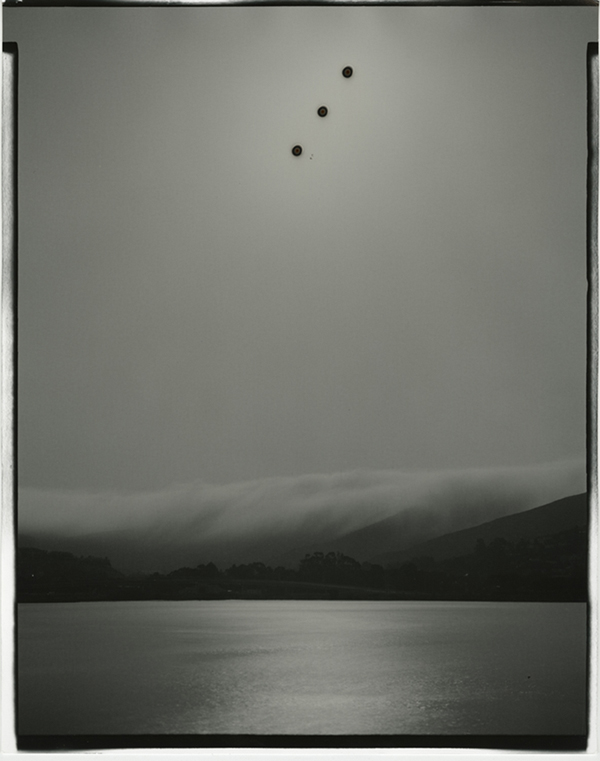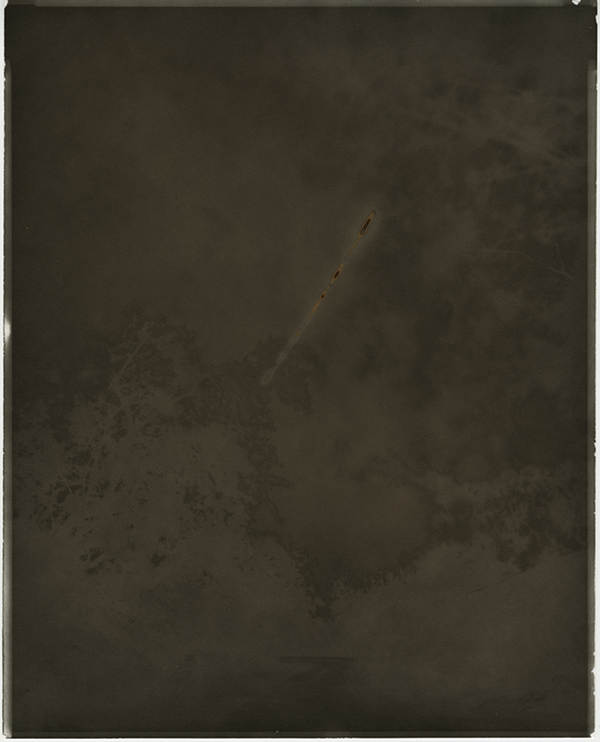| |
||
 Chris McCaw (San Francisco, CA), Sunburned GSP #219 (Santa Cruz Mountains/Random), 2008, Unique gelatin silver paper negative, 14 x 11 inches, Courtesy of the artist and Michael Mazzeo Gallery, NYC
 Chris McCaw (San Francisco, CA), Sunburned GSP#163 (Mojave), 2007, Unique gelatin silver paper negative, 14 x 11 inches, Courtesy of the artist and Michael Mazzeo Gallery, NYC  Chris McCaw (San Francisco, CA), Sunburned GSP #229 (San Francisco Fog/ Every 15 Minutes), 2008, Unique gelatin silver paper negative, 14 x 11 inches, Courtesy of the artist and Michael Mazzeo Gallery, NYC Artist Statement By severely overexposing vintage photographic paper in my homemade large format cameras with specialized military reconnaissance lenses, the suns help me to blur the concept of a photograph as being a simple representation of reality . Through hour-long exposures or short ones that are evenly or randomly spaced, the sun goes into the camera, literally burning its path into the final, one-of-a-kind paper negative. With the change of seasons come variation of the angle of the sun's trajectory, imprinting where and what time of year the image was made. The results are an eerie reversal of tonalities along with the remnants of ignition that occurred inside the camera. This project has sparked all kinds of ideas regarding time, seasons, environmental issues, and the photographic process beyond traditional representation. My favorite part is watching smoke come out of the camera and the vague scent of roasted marshmallows as the gelatin in the paper cooks.
|
||
|
|


